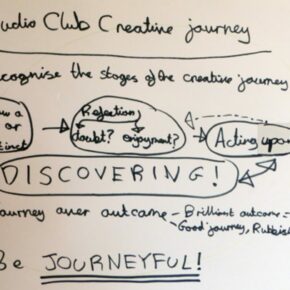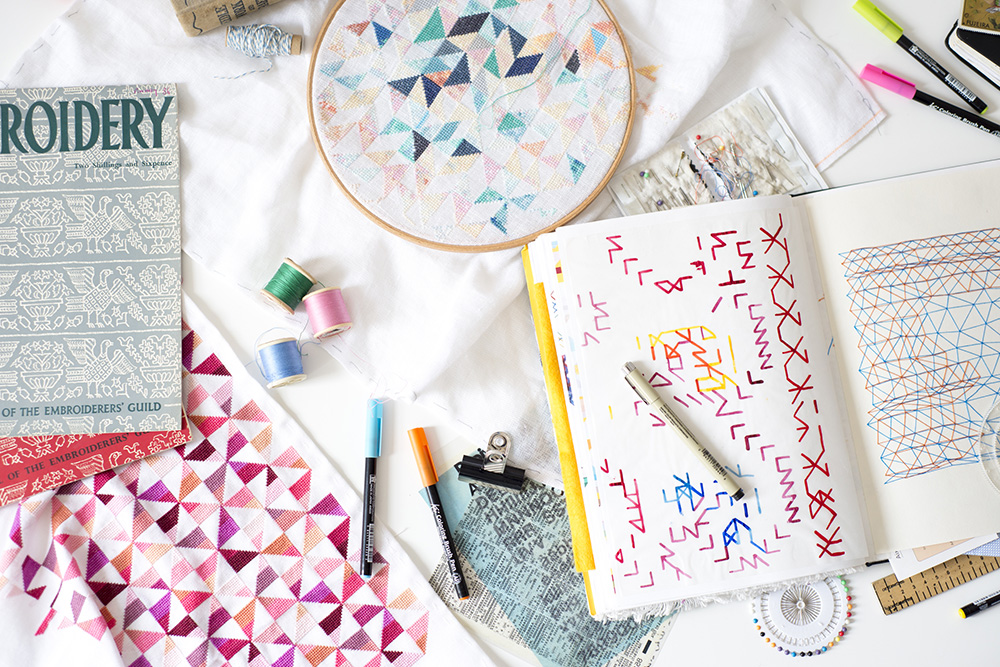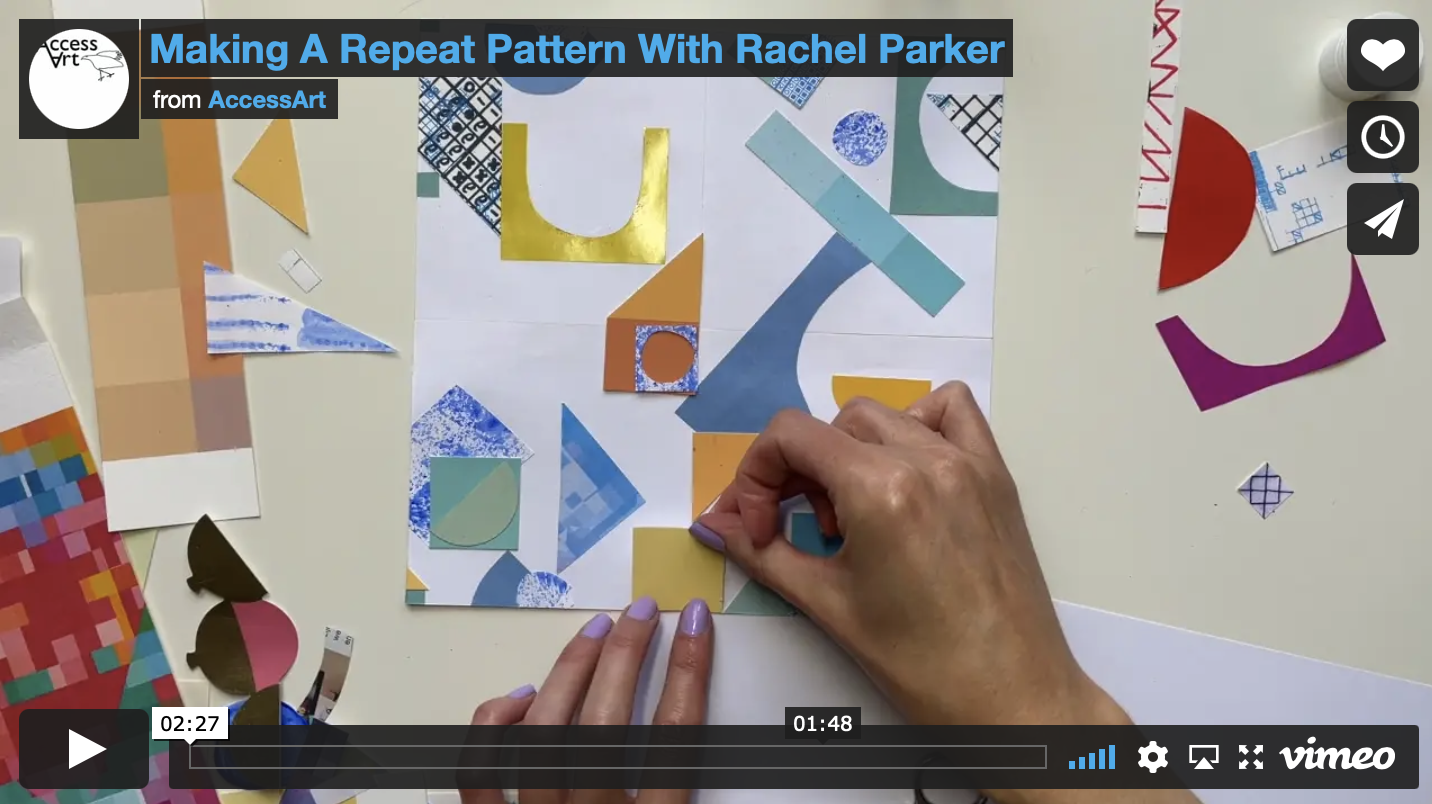To help teachers navigate AccessArt resources, and to build an understanding of some of our key approaches to enabling creativity, AccessArt is creating a series of “pathways” around themes and topics which can be used in schools. See the pathways as steeping stones to help you create exciting creative learning journeys.
If you use our resources in schools please do tag @accessart (Facebook and Twitter) and @accessartorguk (Instagram) with any outcomes – we always love to see them! Any questions pls email info@accessart.org.uk
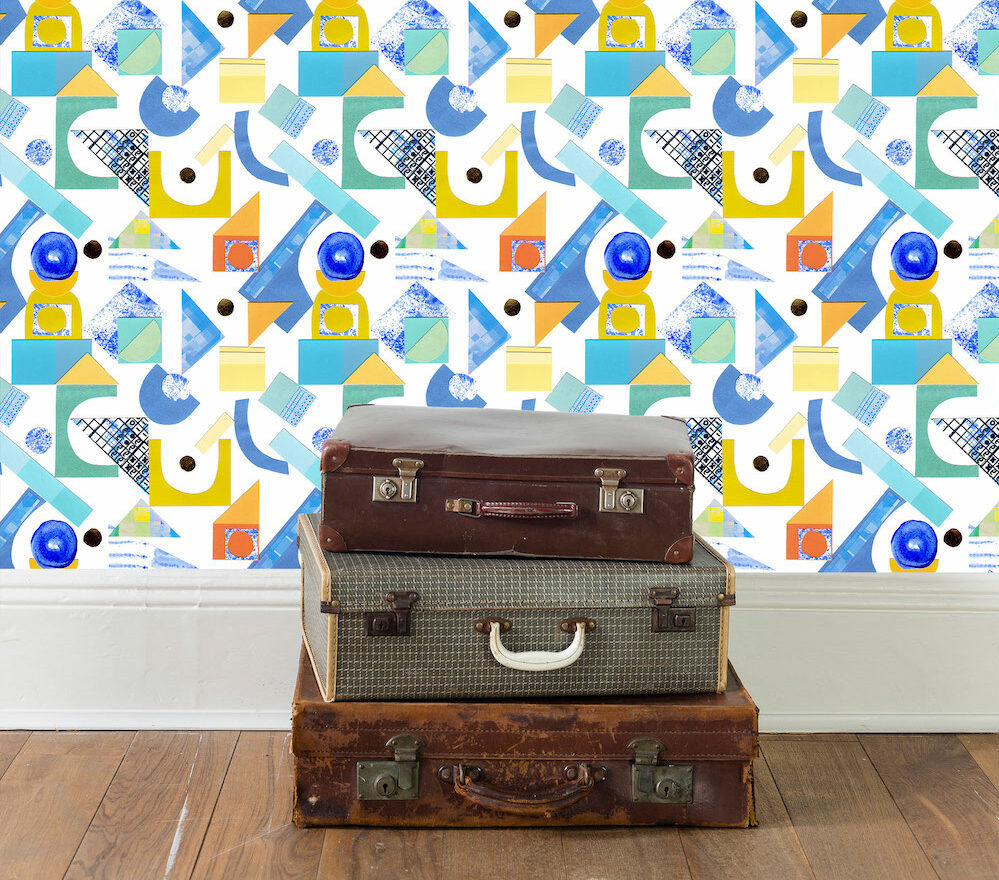
This pathway provides a framework for teachers to enable pupils to explore how they can create a repeating pattern.
The resources below can be used with upper Key Stage 2 children (ages 9 upwards) and teenagers.
The project combines a mathematical way of working (full instructions given below) with a playful experimental way of creating imagery. It also provides a great opportunity to look at how a contemporary designer works, and the kinds of products made out of her images.
As with all AccessArt approaches, the emphasis is on a journey of building independent learning through lots of experimentation and creative risk taking, and balances sketchbook and exploratory work with high quality and varied final outcomes.
The pathway can be condensed or expanded (steps can be missed out for a smaller project), but on average will take 2 to 4 weeks. If time is limited or the children are less experienced shrink the project by creating more simple patterns.
Before you Start: Teacher CPD
Journeyful Teaching & Learning
This pathway illustrates how important it is to take a “journeyful” approach to facilitating art. Read the Teaching for the Journey and not the Outcome resource here to understand more about why this approach is important.
Start Your Journey!
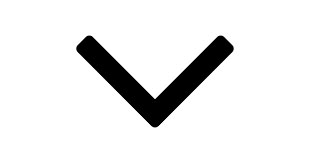
Step 1. Be #InspiredBy Rachel Parker
Rachel Parker is a surface pattern designer. In this post Rachel explains what a surface pattern designer does, and she shares her passions and gives us a window into her working processes.
Use this post to start a conversation with pupils about where they encounter surface pattern, and to think about forms of inspiration and outcomes.
Step 2. Make a Repeat Pattern
Watch the video on this page in which Rachel Parker shares the process for making a repeat pattern!
Think about how you might use the repeat pattern to create book covers, posters and fabric.
You Might Also Like…
Screen Printing Using Overlaid Pattern
In this resource Paula Briggs shares a method for making simple, overlaid patterns on paper.
Block Printing: Creating Repeat Patterns Using Letters with Andy McKenzie
Andy shares his method for making simple blocks from wood and foam.
Going to use this resource in your setting? We’d love to see any results, and please do make sure you credit appropriately!
We’d suggest using the following #InspiredBy Rachel Parker on @accessart (or @accessart.org.uk for Instagram)

